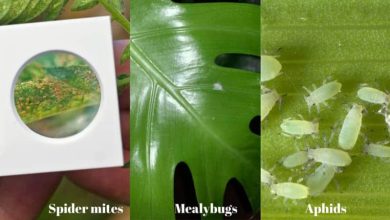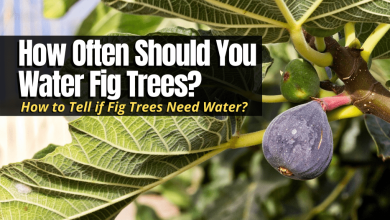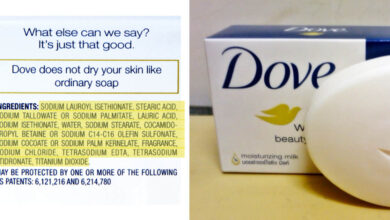Leaves texture

There are millions and millions of plant species in the world. Each one of them has a different type of leaf with a different texture. This is what today’s article is about. The texture of the leaves can vary tremendously depending on the size, hardness, touch, surface, blade and other aspects.
We are going to review all the types of textures that we can find on the leaves. Do you want to learn about it? You just have to keep reading
Types of leaf texture

Touch
The first texture that we are going to analyze is part of the sensation when touched. The feel of a blade can be smooth or rough. These are the best known to people. The rougher, the more glasses it has. On the other hand, we find the hairy or hairy ones. There are them with a velvet touch and stormy. Lastly, we have those that are rough and flaky in texture. The scales usually fall off when they molt to new tissues.
Hardness
The hardness of the blade is the ability not to be bent by an external force. Depending on how hard it is, we find it:
- Soft
- Leathery
- Rigid or hard
Surface
The surface of the sheet could be said to be its size. Depending on the need to capture more sun for photosynthesis we find different types of surface. The textures are:
- Flat
- Wavy
Limbo
According to the limbo we can find it:
- Coiled
- Ribbed
There are two other textures that do not depend on any of these factors and are the viscous and the glossy texture.
Leaf color

Just as the textures of the leaves vary depending on the species, so does the color. We can find this range of colors:
- Light green, yellowish green or glaucous
- bluish green
- Purple
- Medium green
- Dark green
- Reddish
- Orange
- Silver green or whitish green
- Variegated: Mix of yellow or white on green
How is the texture of the flowers?

We have seen the texture of the leaves, but… is that of the flowers the same? Not quite. The parts that form them, in the vast majority of cases, are attractive to the animals that pollinate them. Therefore, they are:
Touch
They are generally soft. Some are cottony, but many others are velvety. However, with those of certain species you have to be careful, as they are thorny.
Hardness
The types of hardness of the flowers coincide with those of the leaves, so they can be soft, leathery or hard.
Surface
The surface of the flowers is that of the petals, bracts and/ or sepals that it has. Thus, we have:
- Simple flowers: they are those with a single crown of petals.
- Compound flowers: also called inflorescence. They are a group of tiny flowers arranged in a floral chapter, which is formed by bracts (modified leaves that look like petals).
Flower color
The color will vary greatly depending on the species and/ or cultivar, but it must be taken into account that the range of colors of the flowers is very, very wide: green, red, pink, white, bluish, variegated, tricolor, yellow,…
There are so many, and so different, that it is not surprising that plants with showy flowers occupy a prominent place on balconies, terraces, patios and of course in gardens.
How to decorate with plants taking into account their texture?
Colors

Image – Flickr/ JR P
When decorating with plants, texture is one of the things that we must take into account the most, since if greenish colors predominate in the place where they will be, for example, the leaves of the plants that we want to add must be of some kind. tonality that stands out.
Imagine that you already have your garden, balcony or patio with plants, but the area looks too green. If you want to give color, it will be very interesting to look for yellowish, reddish or even variegated species, such as Ensete ventricosum ‘Maurelli’ that has beautiful green-purple leaves, Acer palmatum cv ‘Aureum’ that has green-yellowish leaves, or the Euonymous who has them variegated.
Cold and warm

Colors are classified in different ways, but above all according to whether they are cold or warm. Colds are from the lower half of this graph: from greenish to violet; instead the warm ones are yellowish, orange and reddish.
In landscaping and interior decoration with plants it is necessary to start from the base that the stems and leaves are usually greenish; that is to say, ‘cold’, on the other hand the flowers – generally – of warm colors. For this reason, it is not always easy to find specimens that stand out, and when they are found, they should be placed in special areas, or at least, used as indicators that will lead us to those areas, such as the pool for example.
Touch

The touch that the plants have will determine, to a large extent, if that garden or balcony is cozy or not. Think about it: we all like to touch the leaves, get close to the flowers to see if they smell, caress the trunk. But we usually stay away from the thorny ones, by pure instinct, unless it is clear that we love cacti and these types of plant beings .
Even so, thorny plants should be avoided near roads and areas where we will spend more time. On the contrary, the ‘harmless’ ones, that is, those with soft or semi-soft leaves, it is interesting to put them nearby, in a place that is not only visible but can also be accessed easily.
Exception: rose bushes are shrubs that, despite their thorns, have such beautiful flowers that there is no need to hesitate for a moment to plant them on the trails, for example. You can even buy mini rose bushes and have them decorating the tables.
We hope you have learned a lot about the texture of leaves and flowers, and can take advantage of it to create dreamy corners .

![Photo of Stevia rebaudiana: [Cultivation, Associations, Pests and Diseases]](https://www.complete-gardening.com/wp-content/uploads/2022/08/stevia-rebaudiana-cultivation-associations-pests-and-diseases-390x220.jpg)


